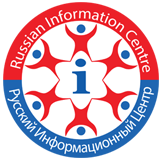Location : CATHEDRAL OF THE RESURRECTION OF CHRIST (SAVIOR-ON-BLOOD)
Saint Petersburg.
The church was founded in 1883 at the site of tragic events – on March 1, 1881, Emperor Alexander II was mortally wounded here, heading that day to the place of the parade of troops on the Field of Mars. His son, Alexander III, ordered the construction of a church on this site for regular services for the slain. That is why the name of the Church of the Savior on Spilled Blood was assigned to the temple, although officially it is called the Church of the Resurrection of Christ.
Not only Russians, but also residents of Slavic countries donated money for the construction of the temple. On the walls of the bell tower are placed more than a hundred mosaic coats of arms of large and small cities, provinces and counties that participated in fundraising. Here is the coat of arms of the Romanov dynasty. The cross of the bell tower is crowned by a gilded royal crown – a sign that the greatest contribution was made by members of the august family. In total, 4.6 million rubles were spent on construction.
For the decoration of the chapters, copper parts were used, covered with color durable frost-resistant enamel with an area of 1000 square meters. The highest dome is 81 m. Twenty granite boards are installed around the perimeter of the building, on which the acts of Alexander II are described in gilded letters. Artists V.M. worked on the mosaic ensemble of interior decoration. Vasnetsov, M.V. Nesterov, A.P. Ryabushkin.
From the side of the Mikhailovsky Garden, the temple is surrounded by a laced cast-iron fence with a vegetable pattern, made according to the drawing of Parland.
After the revolution, the Cathedral of the Savior on Spilled Blood was closed and did not restore for a long time. There were even rumors that they were going to disassemble it. In 1970, he was transferred under the patronage of St. Isaac’s Cathedral, which allocated 80% of the funds for restoration.
In 1997, Spas-na-Krovi opened its doors to visitors as a museum, which contains a huge collection of mosaic icons.
